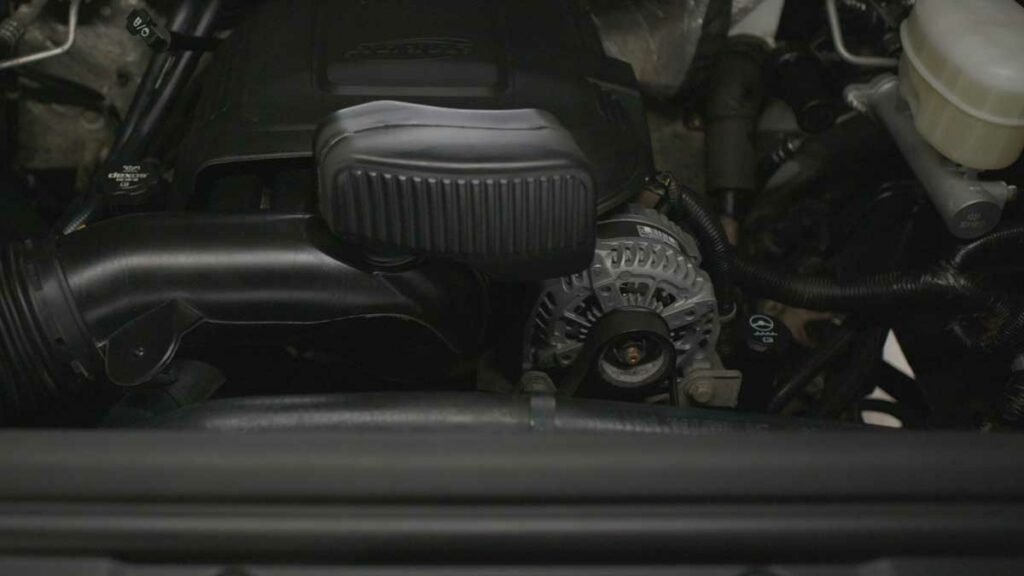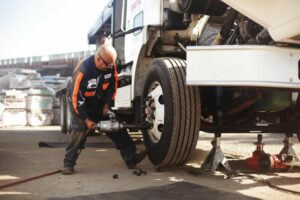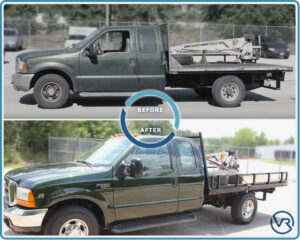Why invest in a whole new fleet when you can restore your existing one for long-term performance?
The process of Commercial Fleet Restoration isn’t just about repairs; it’s about ensuring each vehicle in your fleet is ready to operate at top efficiency. When done right, restoration can extend the life of each vehicle, offering improved reliability, safety, and cost savings.
Let’s look at the essential steps in the restoration process that help you get the best return on your investment without replacing your fleet.
Setting the Foundation
A thorough assessment marks the first step in Commercial Fleet Restoration. This stage involves a comprehensive evaluation of each vehicle, focusing on internal and external conditions. Specialists can create a clear plan by analyzing the history, mileage, and condition. An assessment ensures the restoration focuses on what each vehicle specifically needs, setting the stage for successful and efficient work.
Preparing for Work
Before any mechanical work can begin, all fluids, including refrigerants, oils, and fuel, must be safely removed. This process is critical to protecting technicians and vehicles alike. After fluid recovery, each vehicle undergoes a thorough wash, ensuring no residue interferes with the restoration work. A clean vehicle is essential for spotting any additional areas that need attention, laying the groundwork for precise repairs and replacements.
Engines, Transmissions, and More
Mechanical overhaul is a significant part of Commercial Fleet Restoration. This stage focuses on engines, transmissions, and differentials, ensuring that all primary systems are in excellent working order.
The goal is to replace any worn-out parts and recalibrate the engine for maximum efficiency. For most fleets, an overhaul like this can dramatically reduce future repair costs, enhancing reliability across the fleet.
Suspension and Brakes
Suspension components, brakes, and steering systems are next on the list. Replacing old, worn-out suspension parts ensures that each vehicle provides a smooth and stable ride, essential for driver safety.
The brakes are also examined thoroughly, focusing on maximizing stopping power and reducing the risk of unexpected breakdowns. These enhancements boost safety and contribute to a smoother overall driving experience.
Interior Restoration
An often-overlooked part of Commercial Fleet Restoration is the vehicle interior. Seats, dashboards, and other high-contact areas are cleaned, repaired, or replaced. Upgraded interiors make the vehicles look better and provide a more comfortable environment for drivers. A comfortable driver is a productive driver, and an updated interior can significantly reduce fatigue on long hauls.
Exterior Work: A Fresh Look with New Paint and Glass
Aesthetics matter for a fleet that represents your business. The exterior restoration includes paint touch-ups, dent repair, and glass replacements. Vehicles with updated exteriors project a professional image and are less prone to rust and weather-related wear. This step ensures that each vehicle looks its best while being better equipped to withstand daily use and environmental factors.
Reassembly and Final Adjustments
Once all components have been restored or replaced, the reassembly phase begins. The chassis and cab are joined back together, and any additional equipment or customizations are added.
At this stage, technicians perform final checks to ensure all systems function correctly and the vehicle is ready to rejoin the fleet. This step is crucial for achieving the desired outcome of long-lasting, efficient fleet performance.
Quality Control and Road Testing
Before returning the vehicles, quality control specialists perform road tests and final inspections. Every system is checked to ensure it meets safety and performance standards. These tests allow technicians to address any last-minute issues and confirm that each vehicle is ready for the demands of daily operations.
FAQs
Why is an assessment necessary for fleet restoration?
An assessment identifies specific issues with each vehicle, allowing for a customized restoration plan. This step ensures that only necessary repairs and upgrades are made, saving time and resources.
What are the main benefits of restoring a fleet instead of replacing it?
Fleet restoration saves up to 50% compared to buying new vehicles. It also reduces downtime, allows for re-depreciation, and supports sustainability by minimizing waste and conserving resources.
How long does the Commercial Fleet Restoration process take?
The turnaround time can vary based on the extent of the restoration needed. Still, a typical fleet restoration at Vehicle Reman takes approximately 2-4 weeks per vehicle, ensuring minimal disruption to operations.
Conclusion
Commercial Fleet Restoration is a valuable option for companies seeking cost-effective, environmentally friendly ways to maintain their fleets.
By carefully restoring each component, from mechanical systems to interiors, businesses can maximize the lifespan of their fleets without the hefty expense of purchasing new vehicles.
This comprehensive approach to fleet management is efficient and sustainable, helping companies like Vehicle Reman meet operational goals while contributing positively to the environment.



